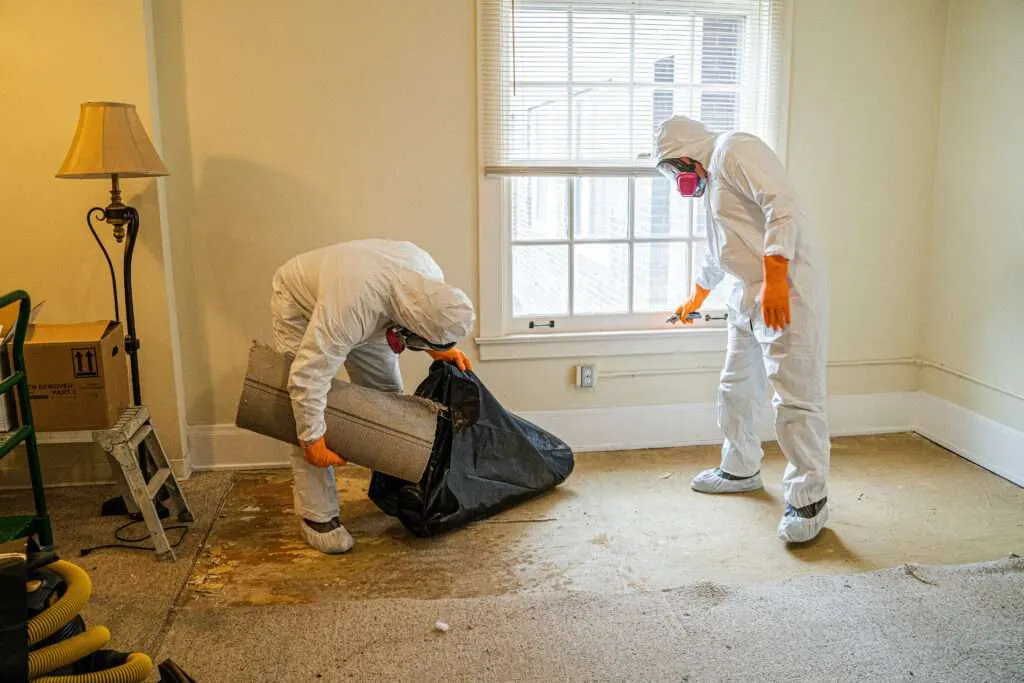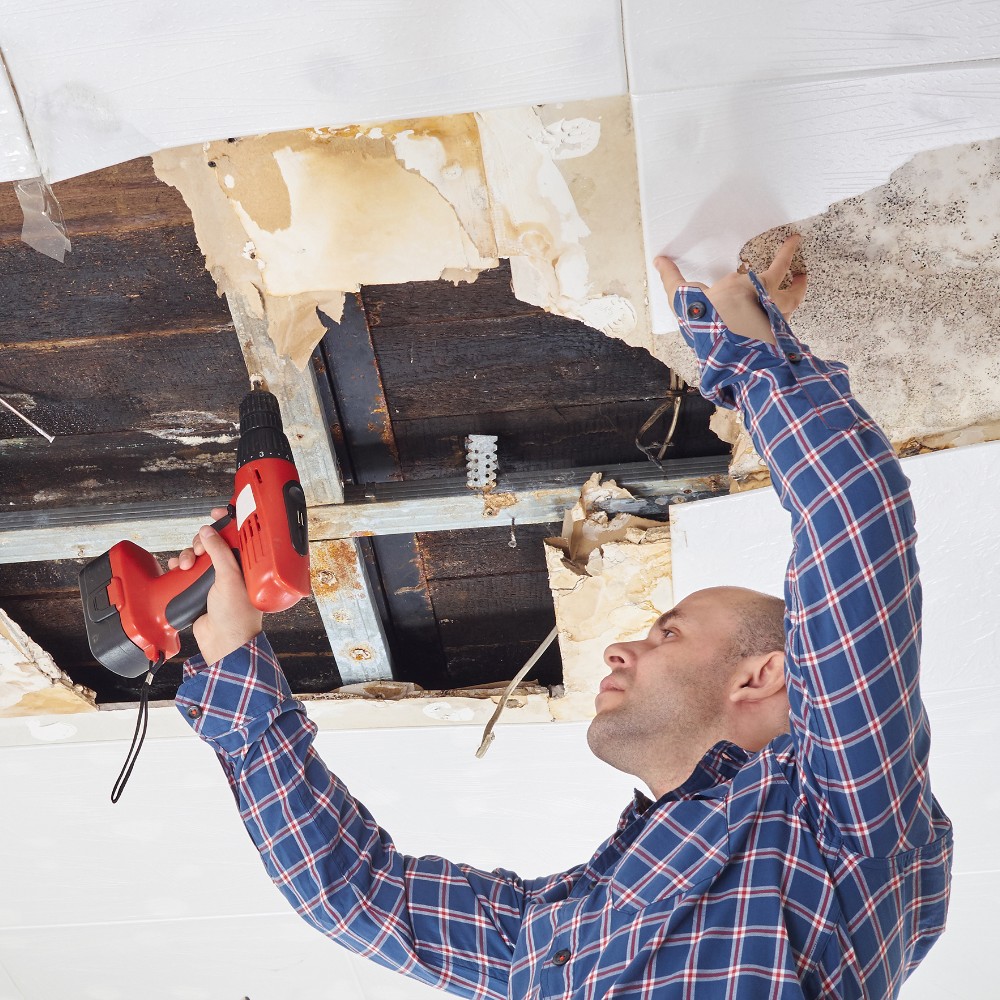Leak Detection Philadelphia: Early Treatment for Building Security
Wiki Article
Emergency Situation Water Damages Repair: Swift Action to Reduce More Damage
What precisely does emergency water damage reconstruction require? By recognizing the seriousness and detailed nature of this process, you will gain valuable understandings right into exactly how specialists take on emergency water damage, making sure a swift and effective feedback.Importance of Swift Feedback
Swift feedback is of utmost significance in water damages reconstruction to decrease additional damages and reduce prospective risks. When water damages happens, whether as a result of a ruptured pipe, a natural calamity, or any various other unforeseen event, time is essential. The longer water rests in a building, the even more damages it can create. This is why it is crucial to act swiftly and effectively to remove the water and begin the restoration process.
One of the main factors speedy reaction is vital in water damages reconstruction is to stop the development of mold and mildew and mold. Mold can start to grow within 24 to 48 hours of water direct exposure, and when it holds, it can spread out quickly throughout the afflicted area. Mold and mildew not just creates further damage to the framework of the building however also postures wellness threats to owners. By reacting promptly, experts can extensively dry the location and hinder the growth of mold and mildew, decreasing the demand for substantial removal and making certain the safety and security of those entailed.
Water damage can be ravaging, specifically when it impacts personal products of emotional or monetary value. Acting swiftly enables specialists to examine the damage and execute proper repair techniques to restore as much as possible.
Assessing the Level of Damage

Throughout the analysis, repair professionals thoroughly take a look at the damaged location to recognize noticeable indications of damage, such as water discolorations, distorted materials, and mold development. They additionally make use of specific tools to discover covert damages, such as wetness meters and thermal imaging electronic cameras. This extensive assessment permits them to properly determine the level of the damage and develop a customized reconstruction plan.
Assessing the level of water damage is crucial since it assists experts prioritize their initiatives. They can identify areas that call for immediate focus, such as standing water removal and drying, to stop additional damages and lessen the risk of mold development. They can likewise identify the locations that need repairs or substitute, making sure that no damage goes undetected or without treatment.

Water Removal and Drying Out Process
The water removal and drying out process is a vital step in water damages reconstruction, as it involves the removal of excess water and the complete drying out of the affected location to avoid additional damages and reduce the threat of mold development. After analyzing the level of the water damage, the following action is to draw out the water from the afflicted area.As soon as the excess water has actually been drawn out, the drying procedure begins. This step is vital in protecting against secondary damage, such as architectural damage and the growth of mold and mildew and mildew. High-powered fans and dehumidifiers are used to circulate air and eliminate wetness from the air and surface areas. The drying out process may take numerous days, depending upon the level of the water damage and the materials entailed.
It is very important to make certain that the affected location is entirely he said dry prior to proceeding with any type of fixings or repair. Failing to thoroughly dry out the location can result in lasting problems, consisting of weakened structures, musty smells, and the growth of mold and mold. For that reason, specialist water damage restoration companies employ dampness detection devices to make sure that the damaged location is completely dry prior to proceeding to the following action.
Mold And Mildew Avoidance and Removal
Reliable mold and mildew avoidance and removal are vital in water damage restoration to make sure the security and stability of the affected location. leak detection philadelphia. When water damage happens, whether from a ruptured pipeline, flooding, or a leaking roofing system, it develops an ideal setting for mold and mildew growth. Mold and mildew can start to create within 24 to 2 days after water damages, and if left without treatment, it can spread out rapidly and cause serious wellness risksTo stop mold and mildew growth, it is important to resolve water damage promptly. The initial step is to repair the resource and determine of the water breach.
In instances where mold growth has currently happened, remediation is needed to get rid of the mold and avoid its return. This entails the careful elimination and disposal of afflicted products, such as drywall or rug, to guarantee that all traces of mold and mildew are eradicated. It is essential to keep in mind that mold and mildew remediation must be performed by specialists who have the necessary training and devices to safely handle and get rid of mold.
Bring Back the Affected Area

First of all, it is vital to extensively dry the area to avoid any additional damage and to inhibit the development of mold and mold. This may include the use of specialized drying out devices, such as dehumidifiers and industrial-grade followers, to get rid of all dampness from the affected surface areas.
As soon as the location is completely dry, the restoration process can begin. This might involve replacing or repairing damaged structural components, such as drywall, flooring, or ceiling tiles. It is very important to deal with any underlying concerns that might have triggered the water damages, such as leaking pipes or damaged pipes, to avoid this contact form future incidents.
Furthermore, recovering the damaged location may likewise consist of painting wall surfaces, replacing damaged components, and extensively cleaning and disinfecting the space. This makes certain that not only is the location structurally sound, however it is also visually pleasing and secure for occupancy.
Verdict
In verdict, swift response is crucial in reducing more damage brought on by water emergency situations. Assessing the level of damage permits for reliable water removal and drying procedures to be implemented. Additionally, mold avoidance and removal are necessary in bring back the afflicted area. Generally, timely activity and extensive reconstruction steps are essential to minimizing the unfavorable impacts of water damage.Swift feedback is of utmost value in water damage reconstruction to minimize additional damage and alleviate prospective threats.During the analysis, reconstruction experts extensively take a look at the affected area to recognize visible indicators of damage, such as water stains, distorted products, and mold and mildew growth.The water extraction and drying out procedure is a critical action in water damage restoration, as it includes the removal of excess water and the comprehensive drying out of the afflicted area to protect against more damage and reduce the risk of mold and mildew development. After evaluating the degree of the water damage, the next step is to remove the water from the afflicted area.Efficient mold and mildew avoidance and removal are crucial in water damage restoration to make certain the this website safety and security and stability of the damaged area.
Report this wiki page